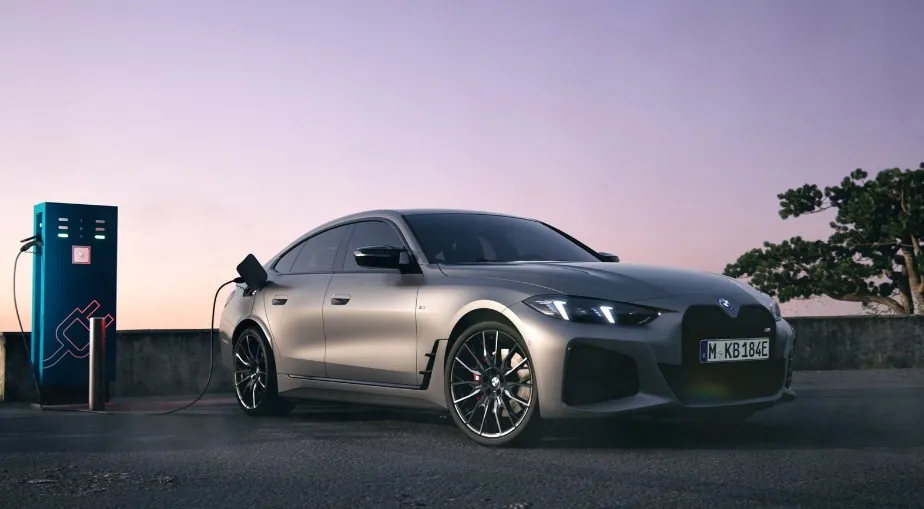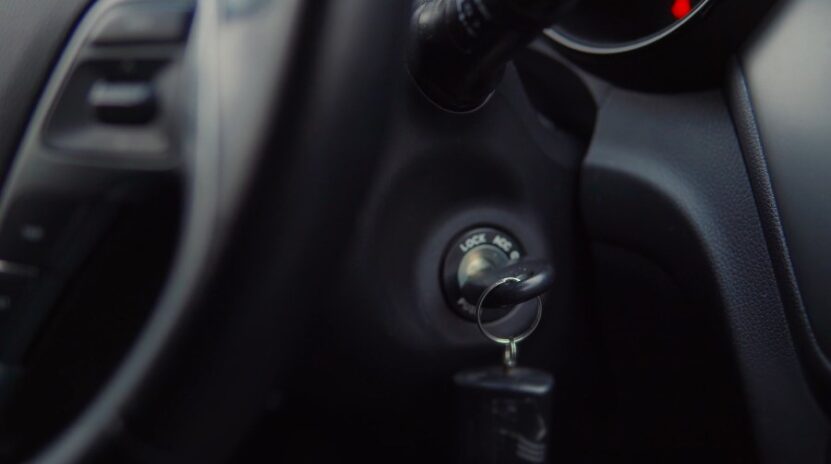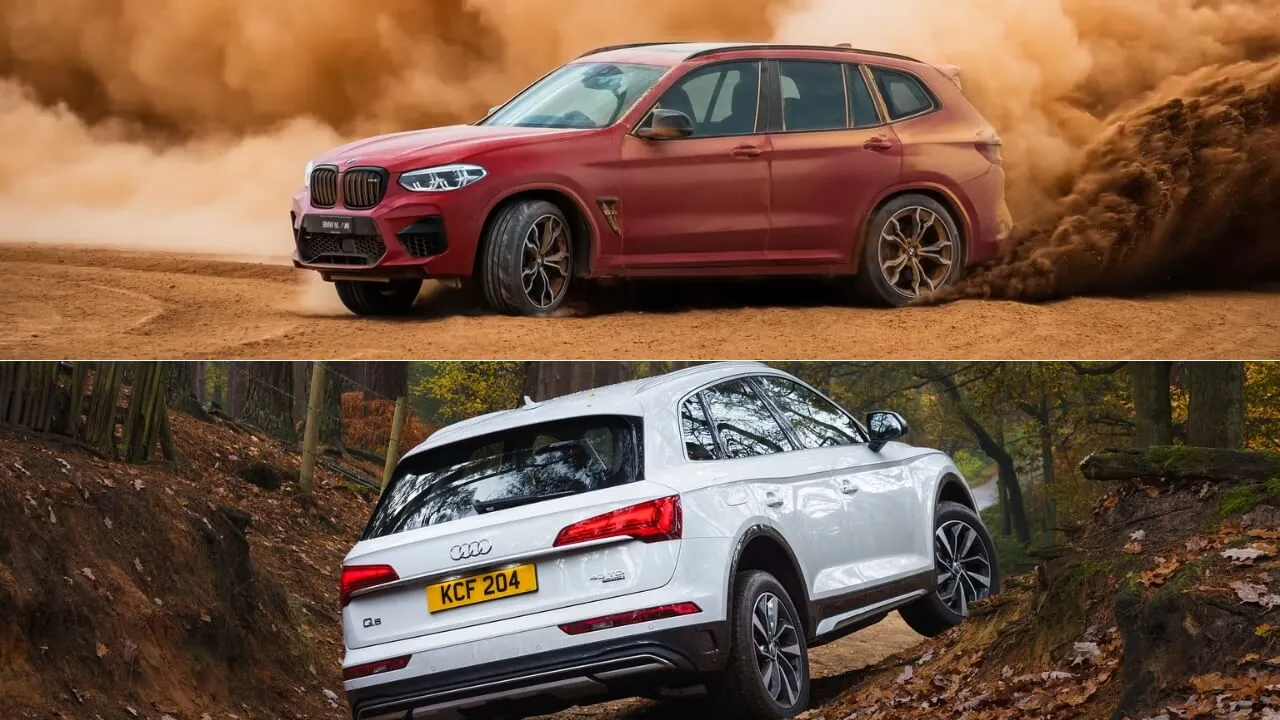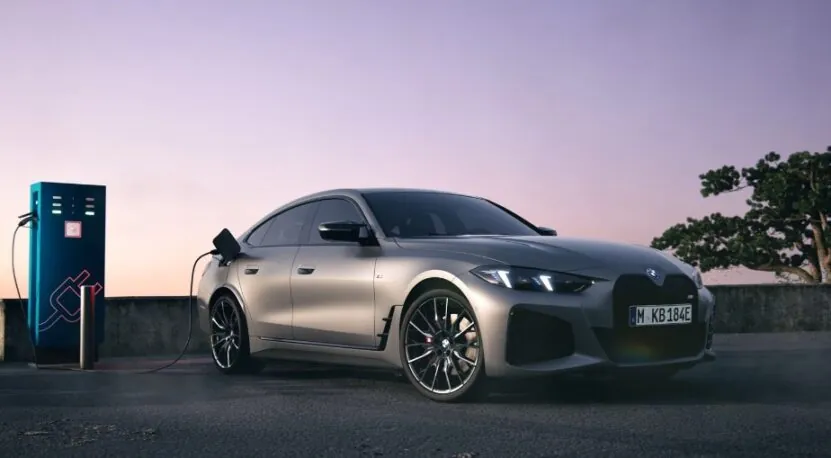
Share Post:
BMW has long been regarded as a leader in automotive design, blending performance and style with precision.
Between the 1960s and 1990s, BMW established a design identity that became synonymous with sporty elegance and engineering excellence.
Clean lines, aggressive styling, and cutting-edge technology positioned BMW as a dominant force in both the sports sedan and luxury markets during this transformative period.
Table of Contents
ToggleThe 1960s: The Rise of the Sports Sedan
BMW entered the 1960s with a renewed focus on performance, style, and engineering precision. Financial difficulties in the 1950s had left the company at a crossroads, but strategic decisions in design and production allowed BMW to redefine its image.
The Neue Klasse series emerged as the turning point, introducing sporty sedans that combined functionality with aggressive styling.
Motorsport success throughout the decade reinforced BMW’s identity as a manufacturer of driver-focused vehicles, setting the foundation for its future as a leader in the automotive industry.
Introduction of the BMW 2002 and Neue Klasse Series
Neue Klasse models introduced a fresh, modern design language that resonated with drivers looking for performance and style. The BMW 1500, launched in 1962, was the first model in the Neue Klasse lineup.
Its success encouraged BMW to refine the design and performance characteristics, leading to the introduction of the BMW 2002 in 1968—a car that defined the sports sedan category.
| Category | Key Feature | Details | Impact |
|---|---|---|---|
| Design Characteristics | Clean, boxy design | Straight, functional lines that defined a modern, practical look | Enhanced visual clarity and simplicity |
| Compact proportions | Short overhangs and balanced dimensions | Improved handling and maneuverability | |
| Signature kidney grille | Recognizable front-end element | Established brand identity and increased aesthetic appeal | |
| The “Hofmeister Kink” | Origin | Named after Wilhelm Hofmeister, BMW’s head of design | Honored the designer and reinforced the BMW legacy |
| Design element | Subtle inward curve at the base of the C-pillar | Created a visual link between the roofline and rear fender | |
| Structural effect | Defined rear-quarter styling | Strengthened sporty stance and added structural definition | |
| Performance Focus | Lightweight construction | Reduced overall weight without compromising strength | Enhanced driving dynamics and efficiency |
| Steering and chassis | Precise steering with a balanced chassis | Delivered superior handling and driver feedback | |
| Suspension | Independent rear suspension | Provided a smooth but controlled ride experience | |
| Engine performance | High-revving four-cylinder engine | Produced lively acceleration and strong mid-range torque |
Introduction of the BMW 2002 marked a turning point for the brand. Its compact size and responsive handling made it popular among both casual drivers and driving enthusiasts.
European and American markets embraced 2002, helping BMW establish a reputation for producing sports sedans that delivered both excitement and practicality.
Influence of Motorsport and Performance
Motorsport achievements played a key role in shaping BMW’s design and engineering approach during the 1960s.
Competitive success on the track not only elevated the brand’s status but also influenced production car development.
| Category | Details | Additional Information |
|---|---|---|
| BMW 1800 Ti/SA | Based on the Neue Klasse platform | Tuned for performance in touring car races |
| Delivered over 130 horsepower, impressive for the time | Achieved victories in the European Touring Car Championship, reinforcing BMW’s performance credibility | |
| Aerodynamic Refinements | Motorsport testing led to improved aerodynamics in production models | Front-end designs incorporated wider grilles and integrated air intakes |
| Compact body shapes reduced drag and enhanced high-speed stability | Improved overall performance and high-speed stability | |
| Suspension and Chassis Development | Lessons learned on the track refined suspension tuning | Stiffened chassis and upgraded suspension geometry improved cornering ability |
| Enhanced weight distribution provided a balanced driving experience | Increased control and responsiveness in various driving conditions |
Performance-based design became a core part of BMW’s DNA during the 1960s. Motorsport’s success demonstrated that BMW’s focus on engineering precision translated directly to real-world performance.
Improved suspension, lighter bodywork, and enhanced aerodynamics became defining traits of BMW sedans moving into the next decade.
The 1970s: Establishing a Design Language
BMW entered the 1970s with a clear focus on defining its design identity, blending performance and luxury into a cohesive package.
The decade marked a shift toward a more structured design language, with sharper lines, refined proportions, and greater emphasis on aerodynamics.
Motorsport success and technological advancements played key roles in shaping the styling and performance of BMW models introduced during this period.
A more aggressive front grille, clean body creases, and a sporty yet elegant stance became consistent features across the lineup.
Launch of the BMW 3 Series and 6 Series (Paul Bracq’s Influence)
Paul Bracq, BMW’s chief designer during the early 1970s, left a lasting impact on the brand’s design direction with the introduction of the BMW 3 Series and 6 Series.
Both models set new benchmarks for style and performance in their respective segments.
- BMW 630CS (E24): The 6 Series coupe featured angular lines, a long hood, and a low-slung silhouette that emphasized a sporty character. Clean, crisp bodywork gave the car an athletic presence while maintaining a sense of refinement.
- BMW 3 Series: The launch of the first-generation 3 Series (E21) established the compact sports sedan category. A tight wheelbase, aggressive front grille, and functional body creases created a performance-focused aesthetic.
Proportions remained consistent with BMW’s focus on driver-centric design. Interiors balanced functionality and elegance, with leather upholstery, wood trim, and well-organized controls.
Bracq’s designs introduced a modern, forward-thinking identity that elevated BMW’s status among luxury automakers.
- Hofmeister kink in the rear window for a cohesive side profile.
- Aggressive kidney grille framed by quad headlights.
- Clean bodywork with minimal ornamentation.
- Cockpit-style interior design focused on driver engagement.
Introduction of the BMW M Division
BMW created the M Division in 1972, signaling a major shift toward high-performance engineering. The goal was to develop track-focused models for everyday driving without compromising luxury or comfort.
BMW M1 (E26)
Kith x BMW M1 E26 (1981) pic.twitter.com/44vbsNAXX9
— Urban Syndicate (@The_UrbanSyn) November 30, 2024
The M1 was BMW’s first mid-engine sports car, developed in partnership with Lamborghini. Giorgetto Giugiaro’s design featured sharp lines, low ground clearance, and flared wheel arches.
Pop-up headlights and wide air intakes gave the M1 a distinct look while improving aerodynamics. The inline-six engine produced 273 horsepower, delivering top-tier performance at the time.
Limited production numbers added to the M1’s exclusivity, making it a highly sought-after model.
The M1’s design philosophy extended to later M models, establishing aggressive styling and track-level performance as defining characteristics of the M Division.
- Flared wheel arches for wider tires and improved handling.
- Lower ground clearance for better aerodynamics and stability.
- Sport-tuned suspension and lightweight construction for enhanced cornering and acceleration.
Advancements in Technology and Aerodynamics
BMW leveraged technological advancements in the 1970s to enhance both performance and efficiency.
A growing understanding of airflow dynamics influenced exterior design, leading to cleaner lines and improved weight distribution.
- Aluminum and composite materials reduced weight without compromising structural integrity.
- Wind tunnel testing and computer modeling helped optimize bodywork, reducing drag and improving fuel efficiency.
- Multi-link rear suspension and upgraded shock absorbers enhanced ride quality and handling precision.
- The adoption of electronic fuel injection improved throttle response and fuel economy.
Advancements in body structure and suspension systems created a more balanced driving experience. BMW’s commitment to aerodynamic efficiency and technological progress positioned the brand as a leader in combining sportiness with luxury.
The 1980s: Sportiness Meets Technology
BMW’s design language entered a new phase in the 1980s, combining sporty aesthetics with cutting-edge technology.
Sharper lines, improved aerodynamics, and increased use of electronic systems reflected BMW’s commitment to both performance and innovation.
Motorsport’s success heavily influenced the design direction, with BMW introducing models that balanced luxury with dynamic driving characteristics.
BMW E30 3 Series and the Iconic M3
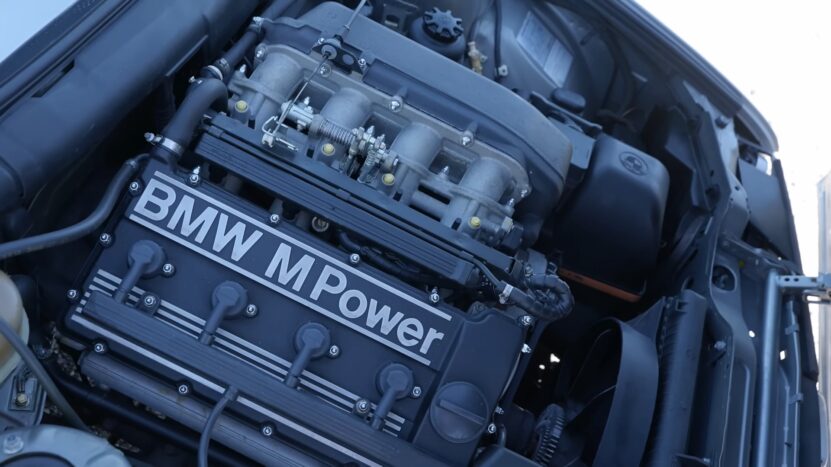
The E30 3 Series became one of BMW’s most defining models of the 1980s. A sharper, more angular design gave the E30 a sportier and more aggressive presence compared to previous models.
Flared wheel arches, a lower stance, and a redesigned front grille reinforced BMW’s performance-oriented image.
- Launch Year: 1982
- Engine Options: Ranged from a four-cylinder to a straight-six engine
- Body Styles: Sedan, coupe, convertible, and touring
The M3, introduced in 1986, took performance to another level. A wider body, enhanced suspension, and a race-inspired aerodynamic package separated the M3 from the standard 3 Series models.
Motorsport DNA was evident in the flared fenders, rear spoiler, and lighter body panels designed for improved handling and speed.
- Engine: 2.3L inline-four (S14) producing 192 horsepower
- 0 to 60 mph: Approximately 6.7 seconds
- Transmission: 5-speed manual
Electronics became a key part of the E30’s design. Anti-lock braking systems (ABS), traction control, and electronic fuel injection enhanced both safety and performance.
A balanced chassis, responsive steering, and improved suspension systems created a driving experience focused on both precision and comfort.
- ABS and traction control: Enhanced braking and grip under various road conditions
- Electronic fuel injection: Improved throttle response and fuel efficiency
- Suspension: Independent suspension with MacPherson struts at the front and semi-trailing arms at the rear
The M3’s motorsport success reinforced BMW’s reputation for engineering excellence. Dominating touring car championships, the M3 became a benchmark for high-performance sports sedans. Collectors and driving enthusiasts continue to regard the E30 and M3 as iconic representations of BMW’s commitment to both style and function.
BMW 7 Series (E23) – Luxury and Technological Advancement
BMW made significant strides in the luxury sedan market with the 7 Series (E23).
Designed as a flagship model, the E23 emphasized both comfort and technological innovation. Softer exterior curves and an enhanced grille design reflected a more refined and modern design language.
- Launch Year: 1977 (production continued through the 1980s)
- Engine Options: Six-cylinder engines ranging from 2.8L to 3.5L
- Body Style: Four-door luxury sedan
Cutting-edge engine management systems set the E23 apart from competitors. BMW introduced the first digital engine management system (Motronic) in the 7 Series, enhancing performance and fuel efficiency.
Onboard diagnostics allowed drivers to monitor vehicle performance and detect maintenance issues, showcasing BMW’s forward-thinking approach to automotive technology.
- Motronic System: Improved fuel efficiency and throttle response
- Cruise Control: Standard in higher trims, providing enhanced driving comfort
- Onboard Diagnostics: Allowed real-time monitoring of engine performance
Interior upgrades elevated the driving experience. Premium leather upholstery, power-adjustable seating, and climate control systems reflected BMW’s focus on driver and passenger comfort.
The dashboard featured an advanced instrument cluster with digital displays, providing drivers with real-time data on speed, fuel consumption, and engine performance.
- Seating: Power-adjustable leather seats with heating options
- Climate Control: Dual-zone climate control with automatic temperature adjustment
- Audio System: Premium sound system with cassette and CD compatibility
Safety features in the 7 Series also advanced during this period. BMW incorporated advanced anti-lock braking systems (ABS), airbags, and reinforced passenger compartments to improve crash protection.
The E23 became a symbol of status and technological sophistication, setting the foundation for BMW’s modern luxury sedan offerings.
The 1990s: Luxury and Performance in Harmony
BMW entered the 1990s with a clear focus on blending high performance with refined luxury. Design language evolved to reflect a more modern, sophisticated aesthetic while maintaining BMW’s signature sporty character.
Precision engineering, advanced technology, and bold design choices defined BMW’s offerings during this decade. Grand touring models, innovative roadsters, and technological breakthroughs elevated BMW’s global reputation.
Increased focus on aerodynamics, comfort, and driver engagement marked a period of significant growth for the brand.
BMW 850CSi and the 8 Series

BMW pushed the boundaries of performance and luxury with the introduction of the 8 Series, positioning it as a flagship grand touring coupe. The BMW 850CSi featured a 5.6-liter V12 engine that produced 375 horsepower, coupled with a six-speed manual transmission and rear-wheel drive.
Performance-focused engineering delivered a top speed of around 155 mph, while the sophisticated suspension system provided exceptional road grip and cornering stability.
Sharp bodywork and a low-profile silhouette created a striking presence on the road. Pop-up headlights, a long hood, and flared wheel arches reinforced the sporty nature of the design. The 850CSi’s aggressive yet refined styling set a new benchmark for luxury coupes.
- Electronic dampening control – Adjusted suspension settings for improved handling and comfort.
- Speed-sensitive steering – Enhanced road feedback and driving precision at different speeds.
- Advanced traction systems – Delivered increased grip and stability under various driving conditions.
Interior craftsmanship matched the performance capabilities. Leather seats, fine wood trim, and a driver-focused cockpit emphasized luxury without compromising the driving experience. The 850CSi’s balance of power, comfort, and style secured BMW’s place in the grand touring segment.
BMW Z1 – Bold Design Innovation
The BMW Z1 introduced radical design thinking in the early 1990s. Engineered as a low-production roadster, the Z1 featured groundbreaking elements that pushed the boundaries of automotive design and functionality. Only around 8,000 units were produced, adding to the model’s exclusivity.
The Z1’s most striking feature was its retractable doors, which slid vertically into the body instead of swinging outward. This innovative mechanism created a sleek profile and allowed for easy entry and exit even in tight spaces. Plastic body panels made of thermoplastic resin gave the Z1 lightweight durability and enhanced resistance to damage.
- Low ground clearance – Improved handling and road connection.
- Wide track width – Enhanced cornering stability and aggressive stance.
- Clean lines and minimalist design – Reflected a modern and sporty aesthetic.
Under the hood, the Z1 housed a 2.5-liter inline-six engine delivering 168 horsepower, paired with a five-speed manual transmission.
The lightweight body and aerodynamic design allowed for responsive acceleration and tight handling, making the Z1 a driver’s car in every sense.
Summary
BMW’s design evolution between the 1960s and 1990s established a foundation for its modern identity. Clean lines, aggressive stances, and a driver-focused ethos became defining characteristics of the brand.
Motorsport influences, technological advancements, and a growing focus on luxury shaped BMW’s design language, creating a legacy that continues to influence automotive design today.
Related Posts:





